‘One of the great gifts of nature’: Expert shares science, viewing methods behind April 8 solar eclipse
| Published: 04-05-2024 4:36 PM |
During the afternoon of Monday, April 8, folks around the Pioneer Valley and throughout the U.S. will be treated to one of the solar system’s most extraordinary events.
At approximately 3:28 p.m., the moon will overtake the sun and our celestial partner’s shadow will drag across the U.S. in a total solar eclipse, which will be the last of its kind over the contiguous United States until Aug. 23, 2044. In western Massachusetts, the moon will block approximately 95% of the sun’s light and this will be the last chance to see one in the Pioneer Valley until a total solar eclipse occurs over the region on May 1, 2079.
For many, this is a once-in-a-lifetime opportunity and experts, such as Smith College’s Chair of Astronomy and Mary Elizabeth Moses Professor James Lowenthal, urge people to take a few minutes out of their day and observe this phenomenon.
“We’re getting to see the solar system happen; the mechanics of our surrounding space is laid out for us to see,” Lowenthal said in “Chasing the Moon’s Shadow: The Total Solar Eclipse of April 8, 2024,” a lecture he delivered at the University of Massachusetts Amherst on March 27. “It’s one of the great gifts of nature, that we can just stand outside and experience the cosmos happening like this.”
The path of totality covers more populated areas than 2017’s solar eclipse, as it stretches across the U.S. from San Antonio through Indianapolis and Cleveland, across Lake Erie into Buffalo and Rochester, New York, and then into Burlington, Vermont and northern New Hampshire.
Before explaining some of the science behind solar eclipses, it should be noted that if you are planning to observe the event anywhere in western Massachusetts, you must use proper protection to look at the sun.
Even though the moon will block out approximately 95% of the sun’s light here, that remaining light is still powerful enough to damage your eyes, especially if you are using a camera, telescope or a pair of binoculars without a filter.
“When watching a partial or annular solar eclipse directly with your eyes, you must look through safe solar viewing glasses (‘eclipse glasses’) or a safe handheld solar viewer at all times,” according to NASA. “Eclipse glasses are NOT regular sunglasses; regular sunglasses, no matter how dark, are not safe for viewing the Sun.”
Article continues after...
Yesterday's Most Read Articles
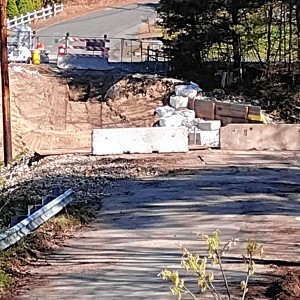 Work on Pinedale Avenue Bridge connecting Athol and Orange to resume
Work on Pinedale Avenue Bridge connecting Athol and Orange to resume
 PHOTOS: Enchanted Orchard Renaissance Faire at Red Apple Farm
PHOTOS: Enchanted Orchard Renaissance Faire at Red Apple Farm
 Rice’s Roots Farm owner plans for community involvement for land’s future
Rice’s Roots Farm owner plans for community involvement for land’s future
 Orange Selectboard declares armory as surplus property
Orange Selectboard declares armory as surplus property
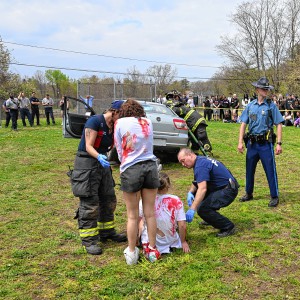 ‘Arrive Alive’ shows Athol High School students the dangers of impaired driving
‘Arrive Alive’ shows Athol High School students the dangers of impaired driving
 Nature lovers gather at Adams Farm for hawk watch
Nature lovers gather at Adams Farm for hawk watch
To ensure your solar eclipse glasses are safe for use, Lowenthal said the only light that should be able to penetrate the glasses is that of the sun.
“If there’s even 1% of the sun showing, you must be wearing those eclipse glasses or looking through a filter,” Lowenthal said.
If you are unable to find a pair of glasses, there are several other indirect solar viewing methods that can be used. Anything with small, circular holes in it, such as a colander, a straw hat or a perforated spoon, can be used to project the image onto the ground — pinhole projection does not mean looking at the sun through a pinhole. You can also construct pinhole viewers out of cardboard boxes.
More information about safe eclipse viewing, including some directions on how to build safe viewing devices, can be found on the American Astronomical Society’s website at eclipse.aas.org/eye-safety/projection.
A total solar eclipse happens when the moon passes in between our planet and the sun, according to NASA. In western Massachusetts, the sky will dim during the eclipse, but it will not become fully dark as our region is not in the path of totality.
Eclipses happen, Lowenthal explained, through an “amazing coincidence,” as the sun is approximately 400 times larger than the moon, but the moon just so happens to be 400 times closer to the Earth.
But that doesn’t mean they’re an exact fit. The Earth’s orbit around the sun and the moon’s orbit around our planet are ellipses, so they don’t always line up perfectly, which makes a total solar eclipse rare, with only about 66 occurring each century.
“That doesn’t really tell the whole story because what you really want to know is how often it’s going to happen for me and for you and my town,” Lowenthal said. “That answer is about once every 375 years.”
The moon will start making its way in front of the sun at about 2:12 p.m. and will reach 95% totality around 3:28 p.m. The moon will then cross over the sun and the eclipse will end at roughly 4:37 p.m.
“It’s so gripping and unusual to see this bizarre thing in the sky,” Lowenthal said of totality (or near-totality), which occurs in just a “very, very short two minutes.”
While regular citizens are stepping outside to view the eclipse, those in the solar energy world will be dealing with the unique challenge of a daytime blackout.
ISO New England, which oversees the operation of New England’s power grid and is headquartered in Holyoke, is preparing to monitor energy levels and work with local utilities when the skies around the region go dark.
Mike Knowland, ISO New England’s manager of forecasts and scheduling, said they have been preparing for these short blackouts, which will have a different effect on arrays than the sun setting on any given night
“ISO New England is going to be operating the power system on April 8 like any other day, but with this one thing that’s going to happen in the middle of it,” Knowland said in a video produced by the agency. “Right after the eclipse starts and the solar [energy] starts to away, we’ll need to replace all of the power that’s being generated by the panels with other types of generation.”
“Unlike the sun setting at the end of the day, solar production is expected to drop off fairly rapidly over the course of the eclipse and will need to be replaced by other sources of power generation,” ISO New England explained on its newswire. “The exact amount of additional generation needed will depend on cloud cover that day. Further, solar production will ramp back up as the eclipse concludes, meaning that additional generation will need to be carefully reduced to maintain system balance.”
For more information about solar eclipses, visit NASA’s website at bit.ly/3U1UyPt.
There is always a chance that the weather could get in the way. If it’s a cloudy day, Lowenthal said those who really want to see the eclipse need to be mobile and prepared to drive to a clear location.
If you’re traveling into Vermont — or anywhere else in the path of totality — be sure to budget extra travel time due to traffic and monitor travel advisories. For more information about traveling to Vermont during the eclipse, visit vermont.gov/eclipse#gsc.tab=0.
Lowenthal shared several of his own stories of chasing eclipses around the globe and several of the celestial events were squandered by cloudy or rainy weather, but, he added, “that’s the way it goes.”
As of Thursday afternoon, the National Weather Service’s Norton office is forecasting Monday to be a sunny day, with highs near 60 degrees.
But, this is New England, so that could change.
“Good luck to you all,” Lowenthal said in closing his lecture, “and clear skies”
Chris Larabee can be reached at clarabee@recorder.com.

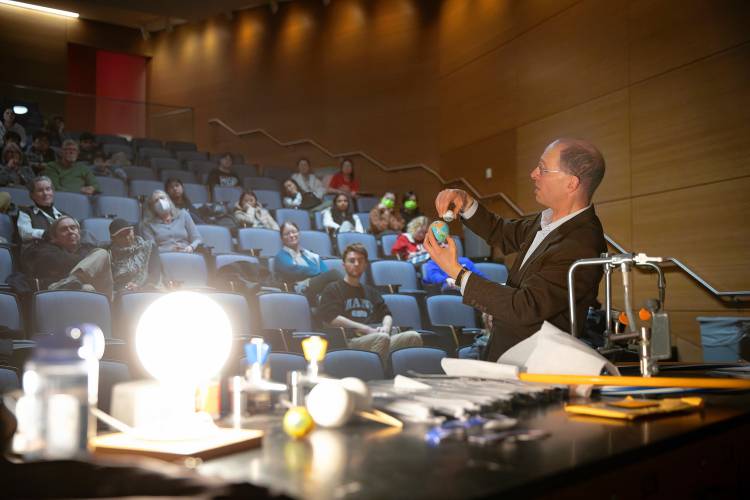
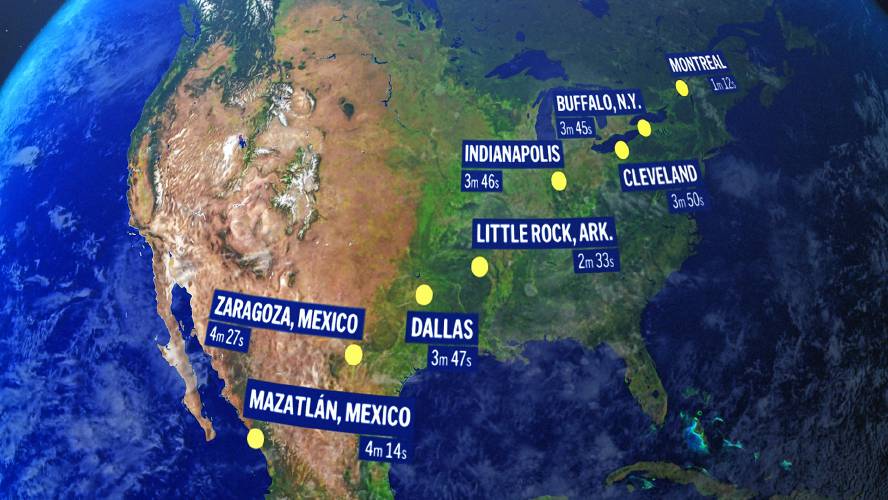
 $700K debt exclusion would fund repairs to Raymond Hall
$700K debt exclusion would fund repairs to Raymond Hall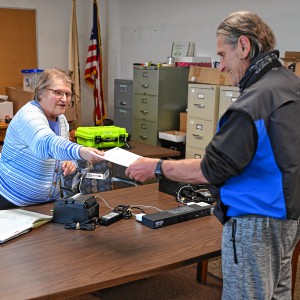 Erving voters say ‘no’ to $3.7M debt exclusion
Erving voters say ‘no’ to $3.7M debt exclusion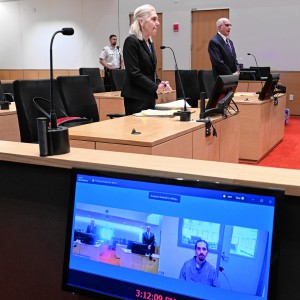 Lawyer argues Joshua Hart’s 2018 conviction for Orange murder had inconsistent verdicts
Lawyer argues Joshua Hart’s 2018 conviction for Orange murder had inconsistent verdicts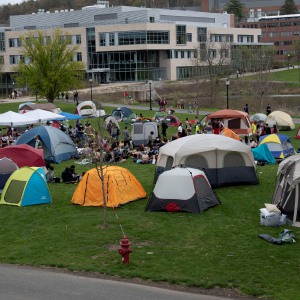 More than 130 arrested at pro-Palestinian protest at UMass
More than 130 arrested at pro-Palestinian protest at UMass